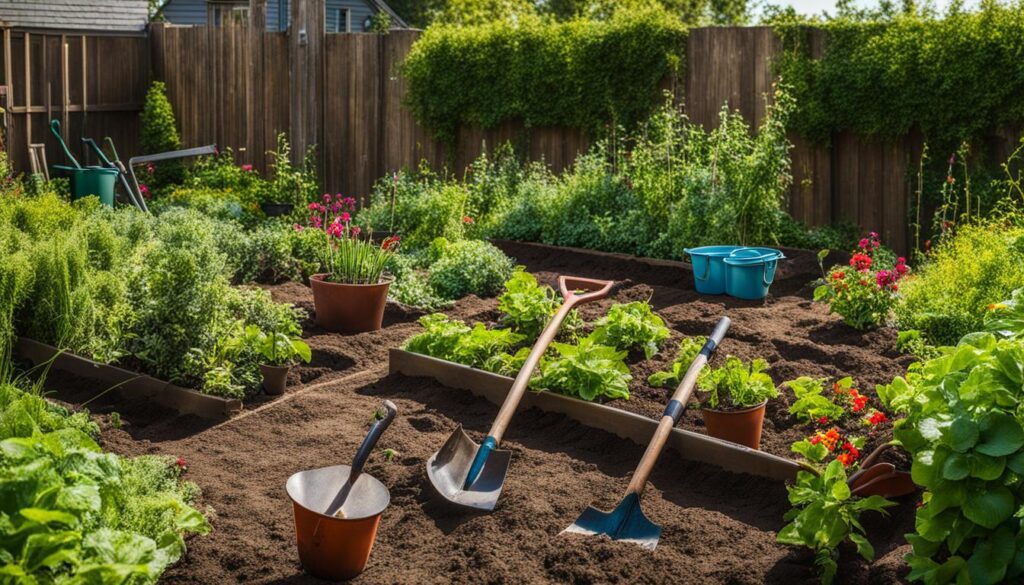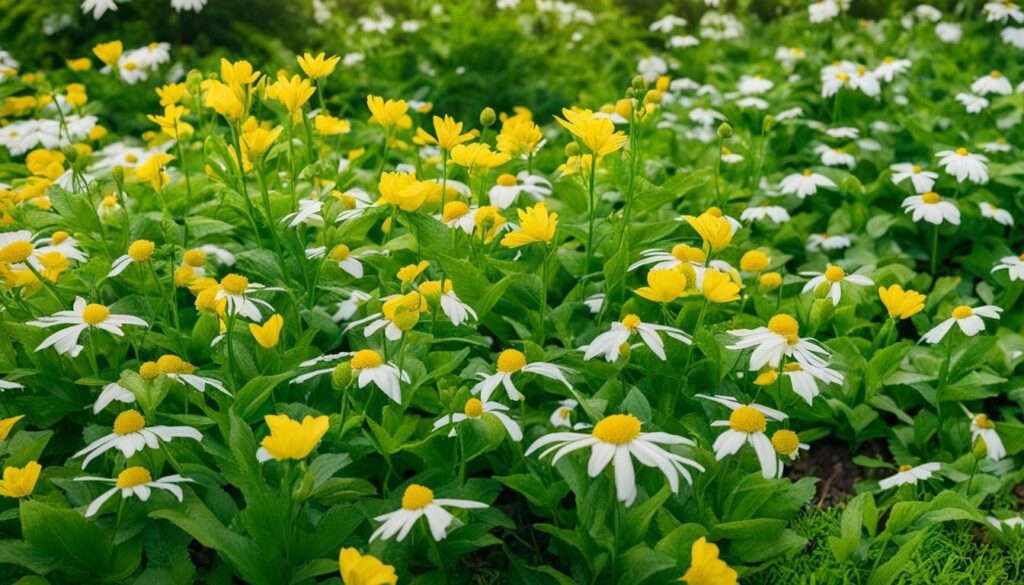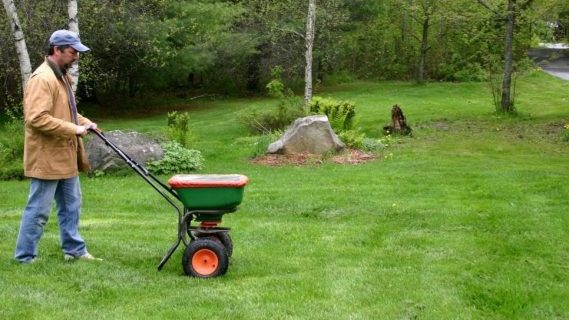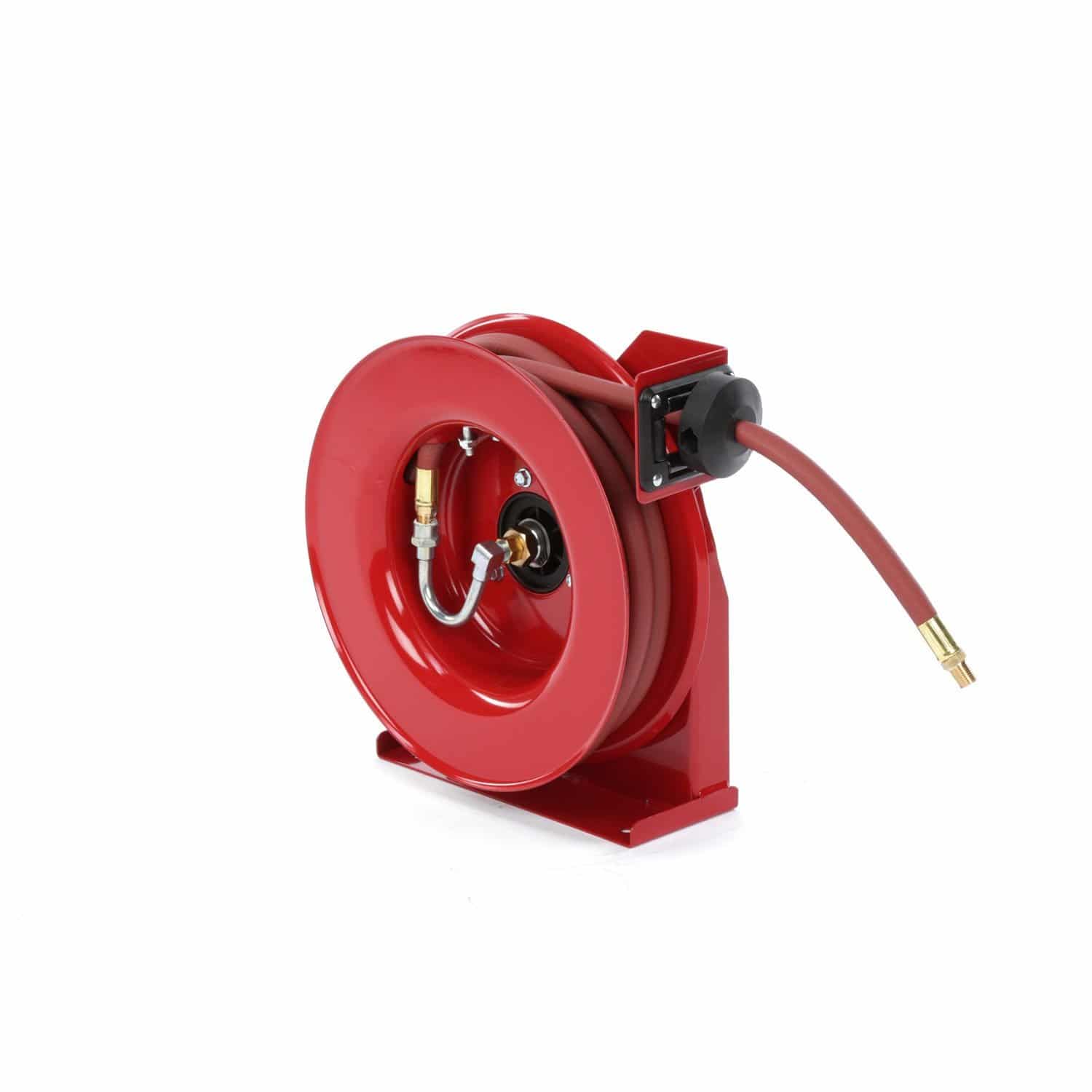Welcome to our informative article on the impact of weeds on plant growth. Have you ever wondered whether weeds are bad for your plants? In this section, we will delve into the detrimental effects of weeds and why it is important to address them in your garden or lawn.
Key Takeaways:
- Weeds compete with plants for essential resources like water and nutrients, hindering their growth and productivity.
- Failure to remove weeds can lead to an overgrowth of unwanted plants in your garden bed or lawn, causing an imbalance in the ecosystem.
- Proper weed control methods, such as manual removal and preventive measures, are crucial to maintaining healthy and vibrant landscapes.
The Impact of Weeds on Plant Growth
Weeds can have a significant impact on the growth of surrounding plants. As they compete for essential resources like water, sunlight, and nutrients, weeds can hinder the development of desired plants and crops. Their invasive nature allows them to outcompete other plants, resulting in weaker and less productive vegetation.
“Weeds, if left unchecked, can be detrimental to the overall health of a garden or agricultural field,” explains John Anderson, a horticulture expert. “They steal vital resources from neighboring plants, limiting their access to what they need to thrive.” This competition for resources can lead to stunted growth, reduced crop yields, and an overall decline in plant health.
The effects of weeds on plant growth can be particularly detrimental in agricultural settings. Farmers and crop growers face the challenge of combating these unwanted plants, as they can have a significant economic impact. Weeds not only reduce crop yields but also increase the cost of production by requiring additional labor and resources for weed control.
Therefore, it is crucial to understand and address the impact of weeds on plant growth to ensure the health and productivity of gardens, lawns, and agricultural fields. By implementing effective weed control strategies, such as manual removal, herbicide application, and preventive measures like mulching, it is possible to minimize the negative effects of weeds and promote the growth of desired plants.
“Weeds are like thieves, stealing vital resources from our plants,” emphasizes Anderson. “To achieve optimal plant growth, it is essential to tackle weed infestations promptly and proactively.”
- Regularly inspect and remove weeds from garden beds and lawns.
- Apply appropriate herbicides selectively to target and eliminate weeds while minimizing harm to desired plants.
- Maintain a healthy and well-maintained lawn or garden, including proper watering and fertilization, to enhance the growth and resilience of desired plants.
By taking these measures, you can mitigate the impact of weeds on plant growth and create thriving, lush spaces that showcase the beauty and productivity of your plants.
Types of Weeds and their Control
When it comes to weeds, it’s important to understand the different types and the potential harm they can cause to your plants. There are three main categories of weeds: native wildflowers, noxious weeds, and invasive weeds.
Native wildflowers, while less harmful than their counterparts, can still overcrowd desired plants if left unchecked. They may compete for essential resources such as water and nutrients, leading to stunted growth and reduced vigor in your garden.
Noxious weeds, on the other hand, pose a greater threat to crops, wildlife, and property. These weeds have the potential to spread rapidly, displacing native vegetation and causing significant damage to ecosystems. It’s crucial to identify and control noxious weeds as early as possible to prevent their negative impact.
Invasive weeds are often non-native species that can aggressively take over an area, outcompeting native plants. They can cause significant disruptions to the local ecosystem, affecting biodiversity and reducing habitat suitability for native wildlife. Controlling invasive weeds requires a strategic approach to prevent their spread and restore the balance of the ecosystem.
Methods for Weed Control
To effectively manage weeds, it’s essential to employ various control methods. Manual removal involves physically pulling or digging out weeds from the root, ensuring they don’t regrow. This method is effective for smaller infestations and can be combined with preventive measures such as mulching to suppress weed growth.
Herbicides can also be used to control weeds, but it’s important to choose the right product and follow the instructions carefully. Selective herbicides target specific types of weeds while minimizing harm to desirable plants. Non-selective herbicides, on the other hand, will kill most plants they come into contact with, so caution must be exercised when using them.
Preventive measures like mulching can play a crucial role in weed control. Applying a layer of mulch around your plants helps to suppress weed growth by smothering them and preventing sunlight from reaching weed seeds. This method not only reduces the need for manual labor but also helps conserve moisture in the soil and improve overall plant health.
Common Lawn Weeds and their Impact
When it comes to maintaining a healthy and lush lawn, common lawn weeds can pose significant challenges. These weeds have the ability to compete with desirable grasses, leading to patchy areas and overall deterioration of the lawn’s appearance. Understanding the impact of these weeds is crucial in order to effectively control and prevent their growth.
One of the most notorious lawn weeds is crabgrass. This aggressive weed can quickly take over a lawn, choking out the desired grass and leaving behind unsightly patches. Sandbur, another common weed, not only competes for resources but also poses a physical threat with its prickly seed heads that can cause discomfort or injury when stepped on. Sedges, bermudagrass, foxtail grass, and quackgrass are also among the common lawn weeds that can disrupt the health and aesthetics of a lawn.
The Impact of Common Lawn Weeds
“Crabgrass, sandbur, and other common lawn weeds can have a detrimental impact on the health and appearance of your lawn,” explains lawn care expert, John Smith.
“These weeds compete with your desired grass for essential resources such as water, sunlight, and nutrients. As a result, the grass becomes weaker, thinner, and more susceptible to diseases and pests.”
In addition to reducing the visual appeal of your lawn, common lawn weeds can also hinder its overall health. Weeds like crabgrass and bermudagrass have extensive root systems that can deplete the soil of nutrients, further inhibiting the growth of desired grasses. This can lead to thinning, bare spots, and a less resilient lawn that is prone to drought stress and weed infestations.
Proper lawn maintenance practices, including routine mowing, watering, and targeted weed control, are essential for minimizing the impact of these weeds. By maintaining a healthy and vigorous lawn, you can create an environment that is less conducive to the growth of common lawn weeds, ultimately resulting in a beautiful and resilient lawn.
The Challenges of Achieving Natural Grasslands
Creating natural grasslands, where native plants thrive, can be a daunting task. While the idea of allowing weeds to grow freely may seem like a simple solution, it is often unrealistic and impractical. Achieving natural grasslands requires significant resources, careful management, and a comprehensive understanding of local ecosystems.
Restoration efforts aimed at establishing native plant communities face numerous challenges. One key obstacle is the presence of non-native and invasive species, which dominate many urban environments. These plants can outcompete native species and disrupt the delicate balance of ecosystems. Removing these invasive plants and reintroducing native species can be a complex and time-consuming process.
The Importance of Resource Management and Planning
Successful restoration projects require meticulous resource management and planning. It is crucial to assess the soil conditions, availability of water, and the presence of existing native species. This information helps determine the most suitable approach for reintroducing native plants and controlling the growth of weeds.
- Resource Management: Proper resource management is key to achieving natural grasslands. This includes monitoring and controlling factors such as water availability, nutrient levels, and sunlight exposure. Ensuring these resources are distributed evenly among desired plants can help prevent the proliferation of weeds.
- Planning: A well-executed plan is vital to the success of grassland restoration projects. This involves selecting appropriate native species based on the local climate and soil conditions. Careful consideration should also be given to the removal and control of non-native and invasive species that may hinder the establishment of natural grasslands.
In conclusion, achieving natural grasslands is a challenging endeavor that requires careful resource management, planning, and targeted removal of invasive species. It is a complex process that demands attention to detail and a deep understanding of local ecosystems. By taking proactive measures and implementing strategic restoration efforts, it is possible to create environments that promote the growth of desired plants and minimize the negative impact of weeds.
Are There Benefits to Having Weeds in a Garden or Yard?
Some may overlook the paradox of weeds, but they can actually benefit a garden or yard. Weeds can improve soil fertility, attract beneficial insects, and act as a natural ground cover. Additionally, some weeds have medicinal properties and can be used for herbal remedies.
Conclusion
In conclusion, weeds pose a significant threat to the growth and health of plants. They compete for vital resources such as water, sunlight, and nutrients, stunting the growth of desired plants and reducing overall productivity. It is crucial to take proactive measures to control and manage weeds in order to maintain vibrant and thriving landscapes.
By implementing a combination of manual weed removal, proper lawn care practices, and targeted use of herbicides, you can effectively minimize the negative impact of weeds. Regular mowing, watering, and weed control in lawns are essential to prevent the establishment of common lawn weeds that can mar the appearance and health of your green spaces.
Restoring natural grasslands can be a challenge, especially in urban environments dominated by non-native and invasive species. However, alternative approaches like planting native shrubs can provide both visual appeal and ecological benefits. It is important to consider the specific requirements of your region and implement suitable strategies to achieve the desired outcome.
To ensure the growth and productivity of your plants, it is essential to stay vigilant and actively manage weed populations. By doing so, you can create environments that promote the growth of desired plants, while minimizing the detrimental effects of weeds on your landscapes.
FAQ
Are weeds harmful to plants?
Yes, weeds are detrimental to the growth of plants as they compete for essential resources like water and nutrients, stunting the growth of surrounding plants.
What are the different types of weeds?
There are three main types of weeds: native wildflowers, noxious weeds, and invasive weeds.
How can weeds be controlled?
Weeds can be controlled through various methods such as manual removal, herbicides, and preventive measures like mulching.
What impact do common lawn weeds have on lawns?
Common lawn weeds like crabgrass, sandbur, sedges, bermudagrass, foxtail grass, and quackgrass can negatively affect the appearance and health of lawns by competing with desirable grasses and creating patches of bare or unhealthy areas.
Is it possible to achieve natural grasslands by allowing weeds to grow?
The idea of achieving natural grasslands by allowing weeds to grow is often unrealistic, as restoration efforts require significant resources and management to establish native plant communities. Urban environments are not ideal for natural grasslands as they are often dominated by non-native and invasive species.
What is the conclusion regarding weeds and their impact on plants?
Weeds are indeed bad for plants as they hinder their growth and productivity. It is important to take proactive measures to control and manage weeds in order to maintain healthy and vibrant landscapes.










